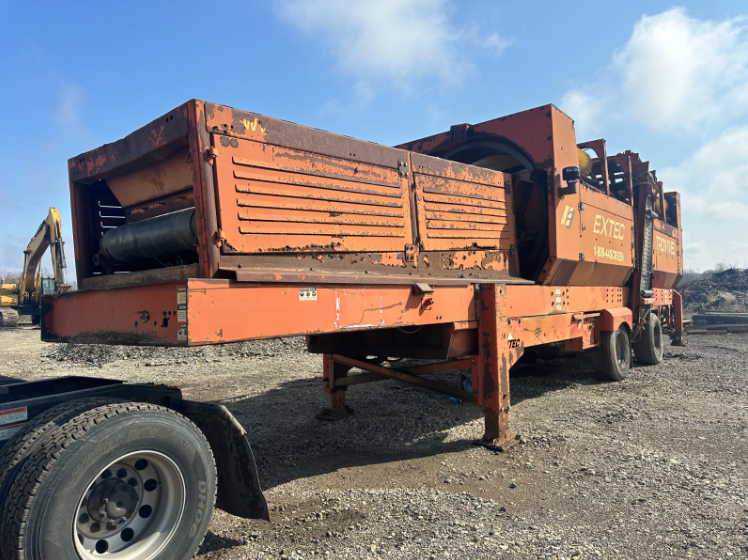Flat rate is ideal for consistent, standard-sized shipments but less effective for heavy, irregular, or high-volume freight
In a market where shipping costs often fluctuate by the day, flat rate freight offers an appealing promise: price certainty. Instead of calculating costs based on distance, weight, and other moving parts, you pay one fixed rate within defined parameters.
But is it the right move for your business?
In this article, we break down what flat rate freight really means, when it works best, and where it might fall short. The aim is to give you a clearer understanding of how this pricing model fits into a broader freight strategy—and how to know if it’s a good fit for you.
| Key TakeawaysFlat rate freight offers pricing predictability, helping businesses forecast costs and simplify day-to-day shipping decisions.It’s ideal for consistent, standard-sized shipments but less effective for heavy, irregular, or high-volume freight.Flat rate isn’t always the cheapest option. In many cases, traditional LTL or FTL pricing delivers better value, especially when weight or distance is a factor.Many businesses use flat rate for some shipments and traditional pricing for others—a balanced approach to cost and control.Your shipping profile should guide your choice. Volume, destination range, and operational capacity all influence which model works best. |
What Is Flat Rate Freight?
Flat rate freight is exactly what it sounds like—a fixed shipping cost that doesn’t change based on the usual variables like weight, distance, or dimensions. As long as your shipment fits within the specified size and weight guidelines, you pay the same price every time.
Why Predictable Pricing Matters
For many shippers, flat rate freight offers welcome relief from fluctuating costs. With one fixed price for qualifying shipments, it removes the guesswork from budgeting and planning. This level of predictability helps teams lock in costs when quoting customers, build more accurate logistics budgets, and reduce last-minute disruptions in the supply chain.
How It Works
Flat rate programs typically rely on pre-set packaging dimensions and maximum weight limits. Once you’ve packed your goods into a qualifying container or unit, the rate applies—regardless of where it’s headed within the coverage zone.
This model is especially useful for businesses shipping:
- Consistently sized parcels
- Similar products or SKUs
- To recurring destinations
Why Flat Rate Exists
Designed to reduce complexity, flat rate freight simplifies cost forecasting for businesses that ship consistent products in regular volumes.
The Advantages of Flat Rate Freight for Your Business
If you’re moving similar shipments again and again, flat rate provides a consistent baseline to support planning and pricing.
More Time for What Matters
We’ve already touched on how this model reduces admin—but here’s the real benefit: less time on quoting means more time building better supply chains. With fewer manual calculations and approvals, your logistics team can focus on efficiency, not just execution.
Leveling the Playing Field for Smaller Shippers
Flat rate freight can be a game changer for small and mid-sized businesses. By removing the volume-based barriers of traditional pricing models, it gives smaller operations access to competitive rates—without needing to fill a truck or negotiate complex contracts.
Flat rate freight benefits for smaller businesses:
- No minimum volume requirements
- Straightforward pricing = faster onboarding of new team members
- Easier to pass savings on to customers
Clearer Comparisons, Faster Decisions
Flat rate pricing makes evaluating providers much simpler. Instead of decoding line items or factoring in accessorial charges for every shipment, teams can compare costs quickly and with confidence—especially useful when they’re making time-sensitive decisions.
Flat Rate Freight—Where the Limits Begin
Flat rate shipping can be a powerful tool—but like any logistics solution, it works best when used in the right context. Understanding its boundaries helps avoid missteps that could cost you time and money.
Flat rate freight isn’t a one-size-fits-all model. It shines in the right context—typically for domestic, regularly shaped shipments that fit within standard guidelines. For shippers with bulk, odd-shaped, or variable freight, a more flexible pricing structure may deliver greater value.
Heavier Isn’t Always Better
One of the key appeals of flat rate is not having to worry about weight-based pricing—but this only works up to a point. Flat rate programs typically impose a maximum weight cap. Exceed that limit, and you’re either paying overage charges or falling back on standard freight pricing.
Tip: For dense or heavy items, traditional freight often ends up being the more economical choice.
Limited Flexibility on Shape and Size
Standardization is what makes flat rate possible—but it also creates rigidity. If your item is unusually shaped or requires special handling (think industrial parts, machinery attachments, or fragile art), it may not qualify for flat rate services at all.
What doesn’t fit:
- Non-stackable or irregular-shaped items
- Cargo requiring pallets or custom crates
- Anything needing climate control or white-glove service
Not Built for Remote or Cross-Border Moves
Flat rate pricing often covers common domestic lanes. But the moment your shipment needs to reach remote areas—or crosses into international territory—you may face additional fees or be ineligible altogether. Those add-ons can quickly cancel out the cost savings you were expecting.
How Are Operators Using Flat Rate Freight?
We’re currently gathering insights from logistics professionals to better understand how flat rate freight performs in real-world operations. In the meantime, we can already see some key patterns in how shippers are approaching it—and where it fits best.
A Strategic Tool, Not a Total Solution
For many businesses, flat rate freight isn’t an all-in move. It’s a tactical option—a reliable choice for specific lanes, shipment types, or customer orders.
Common use cases include:
- Regular shipments of packaged goods within standard dimensions
- E-commerce orders with predictable destinations and volumes
- Promotional campaigns where fixed costs simplify pricing
Hybrid Shipping Strategies Are on the Rise
More often than not, companies are blending flat rate and traditional freight. It’s a best-of-both-worlds approach that brings predictability where possible, while keeping flexibility where it’s needed. For example, a business might use flat rate for its core product line and lean on LTL or FTL for oversized or urgent loads.
As we continue to collect feedback from operators across industries, we’ll be sharing more insights into how flat rate freight is evolving—and how shippers are putting it to work.
The best shipping strategy is always one that’s built around your specific needs, not someone else’s template
Flat Rate vs. Traditional Freight Pricing: What’s the Difference?
Flat rate freight might be a breath of fresh air for some businesses—but it’s not the only option. Traditional pricing models still play a major role in freight planning, particularly when shipment characteristics fall outside the flat rate “sweet spot.”
Here’s how the main pricing structures stack up:
| Pricing Model | How It Works | Best For | Watch Outs |
| Flat Rate Freight | Fixed cost within set size/weight parameters | Consistent shipments that fit standard packaging | Less flexible for bulky, odd-shaped, or heavy loads |
| Weight-Based | Charged by actual or dimensional weight and distance | Large, heavy, or irregular freight | Pricing can vary widely based on volume or density |
| Zone-Based | Pricing varies by distance between origin and destination | Local or regional deliveries | Costs increase sharply across multiple zones |
| Contract Rates | Negotiated pricing based on volume or frequency | High-volume shippers with repeat lanes | Requires commitment and oversight |
Key Considerations
- Flexibility vs. Simplicity: Flat rate shipping simplifies admin and budgeting, but lacks the flexibility of traditional freight when loads fall outside fixed parameters.
- Scalability: Contract and volume-based rates often offer better long-term savings for businesses scaling up their operations.
- Visibility: Flat rate can sometimes obscure what you’re really paying for—while traditional models offer clearer cost breakdowns tied to load specifics.
The bottom line? Each model has its place. The right fit depends on your freight profile, product specs, and operational priorities.
Making the Right Freight Choice for Your Business
Flat rate freight might sound like an easy win—but the best shipping strategy is always one that’s built around your specific needs, not someone else’s template.
Before locking in a freight model, ask yourself:
🧭 What’s your shipment profile?
Are you sending regular-sized, packaged goods? Or are your shipments more varied—bulky, fragile, or irregular? Flat rate works well for consistency. For everything else, flexibility matters more.
🌍 Where are you shipping?
Flat rate is great for domestic, zone-limited deliveries. If you’re frequently shipping to remote areas or internationally, traditional pricing often offers better control and scalability.
📦 How much are you shipping?
Smaller businesses can use flat rate to access competitive pricing. But if your volume is growing—or if you already ship in bulk—negotiated LTL or FTL rates might drive bigger savings over time.
🛠 Do you have internal logistics support?
If your team is lean, flat rate may lighten the load with simplified planning. Larger teams can often unlock greater value by blending flat rate with negotiated or contract pricing.
Flat Rate Shipping Isn’t a One-Size-Fits-All Solution—It’s One of Many Tools
Flat rate shipping, while not a silver bullet, can be a powerful part of your freight mix. At STT Logistics, we help businesses of all sizes build smarter, more adaptable shipping strategies. Whether you’re exploring flat rate, LTL, or full truckload options, we’ll help you move with confidence.
Let’s talk about how to optimize your next move.







